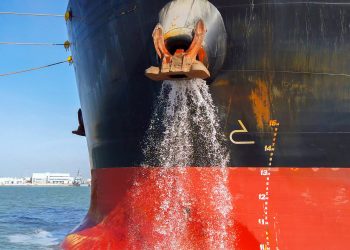Alfa Laval has published a white paper providing an overview of the most influential ballast water regulations and their enforcement, guidance and a few information about selecting a system and supplier to match a particular vessel’s needs, and about what to consider when planning the installation.
Most transported species via ballast water pose serious risks to local ecosystems, human health and regional economies. They can cause severe and irreversible damage, and attempts to limit further destruction are often costly. To minimize and ultimately eliminate the transfer of harmful aquatic organisms and pathogens, various international, national and regional maritime bodies have worked for several years to establish standards for managing ballast water. In response, diverse technological solutions have emerged to help ships comply with the new requirements.
The international discharge standards for ballast water treatment are defined in Regulation D-2 of the BWM Convention. They establish limits for discharged organisms in two different size classes, as well limits for three specific indicator microbes. The numerical discharge limits defined in the USCG Final Rule are the same as those in the BWM Convention. However, the BWM Convention requires measurement of “viable” organisms, whereas the USCG Final Rule requires measurement of “living” organisms.
Differences in measurement
The distinction between IMO and USCG measurement requirements is significant. For example, it has important implications in type approval testing. Type approval as defined in the BWM Convention is governed in practice by the IMO G8 technical guidelines, which have been revised to create greater consistency in land-based testing. The revised G8 guidelines define “viable” organisms as those that can “successfully generate new individuals in order to reproduce the species.” This can be assessed in a number of different ways.
Moreover, the report highlights that there are many ballast water treatment systems on the market that have received type approval to meet international discharge standards. However, no single system is suitable for all vessel types, sizes and operating conditions.It is therefore important to understand the strengths and weaknesses of each technology, so as to choose a system whose capabilities match the vessel and its sailing profile.
The paper further informs about the cost factors and the complexity of a retrofit installation which necessitates thorough preparation and cooperation.
For furthere details you may read the White Paper herebelow
Source: Alfa Laval
































































